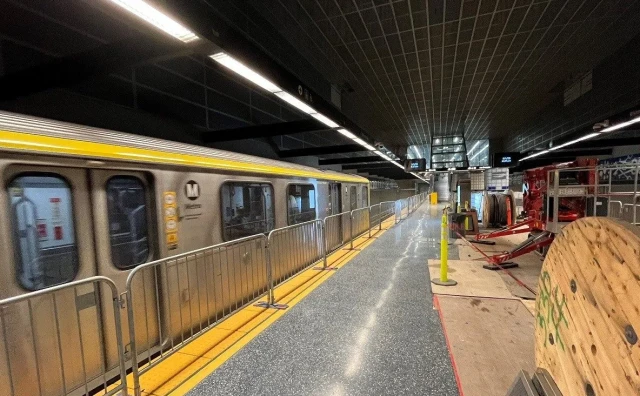With our free press under threat and federal funding for public media gone, your support matters more than ever. Help keep the LAist newsroom strong, become a monthly member or increase your support today during our fall member drive.
This archival content was written, edited, and published prior to LAist's acquisition by its current owner, Southern California Public Radio ("SCPR"). Content, such as language choice and subject matter, in archival articles therefore may not align with SCPR's current editorial standards. To learn more about those standards and why we make this distinction, please click here.
Catalina Is Sinking And Could Trigger A Tsunami, Says Study

Catalina Island could be slowly sinking into the sea and has the potential to to trigger a devastating tsunami that could hit Los Angeles.According to a new study by Stanford graduate student Chris Castillo, Santa Catalina Island is sinking at a rate of about 1 millimeter every five years—which would mean it could be completely underwater in 3 million years. That doesn't make it sound like a pressing matter, but the side of Catalina facing the mainland is apparently sinking at a faster rate, potentially triggering a tsunami-causing landslide according to the L.A. Times.
"It's still something that could do significant property damage, especially for the marinas," Castillo said. "If you see something that could be dangerous, you need to find out more about it."
Underwater images of the seafloor off Catalina show that a massive landslide that occurred about half a million years ago. Castillo fears that another one of those could happen again in the future and hit the ports of Los Angeles and Long Beach and the Orange County coasts.
Despite Castillo's findings, Rick Wilson, the California Geological Survey's tsunami program manager, says he'd be more concerned if such underwater landslides happened more recently. "We try to really focus on sources that happened either in the last 10,000 years or have the potential of occurring again in the very near future," he said.
Catalina was formed when a fault off the coast raised it off the seafloor. However, the decreased activity of the Santa Cruz-Santa Catalina Ridge is what is causing the island to sink, says Castillo. There is considerable debate, though, among scientists over whether it is actually sinking or rising. A study from 2012 found that the island was actually rising. The lead author of that study, Randall Schumann of the U.S. Geological Survey, says, "It is encouraging to see that scientists are continuing to determine a definitive answer to this complex question."
At LAist, we believe in journalism without censorship and the right of a free press to speak truth to those in power. Our hard-hitting watchdog reporting on local government, climate, and the ongoing housing and homelessness crisis is trustworthy, independent and freely accessible to everyone thanks to the support of readers like you.
But the game has changed: Congress voted to eliminate funding for public media across the country. Here at LAist that means a loss of $1.7 million in our budget every year. We want to assure you that despite growing threats to free press and free speech, LAist will remain a voice you know and trust. Speaking frankly, the amount of reader support we receive will help determine how strong of a newsroom we are going forward to cover the important news in our community.
We’re asking you to stand up for independent reporting that will not be silenced. With more individuals like you supporting this public service, we can continue to provide essential coverage for Southern Californians that you can’t find anywhere else. Become a monthly member today to help sustain this mission.
Thank you for your generous support and belief in the value of independent news.

-
Metro officials said it will be able to announce an opening date “soon.”
-
While working for the county, the DA’s office alleges that 13 employees fraudulently filed for unemployment, claiming to earn less than $600 a week.
-
The L.A. County Board of Supervisors on Tuesday voted to declare immigration enforcement actions a local emergency.
-
Tens of thousands of workers across Southern California walk out over pay and staffing issues.
-
People in and around recent burn scars should be alert to the risk of debris flows. Typical October weather will be back later this week.
-
Jet Propulsion Laboratory leadership says the cuts amount to 11% of the workforce.







